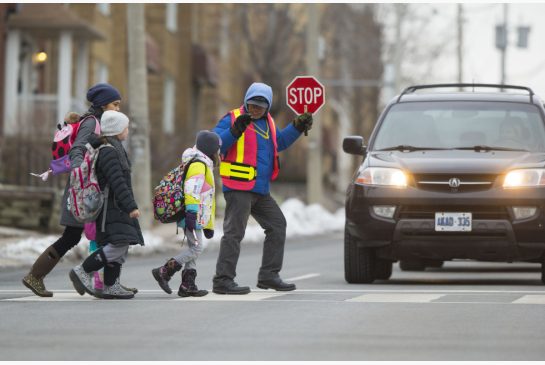The number of children being driven to school tripled in some cases between 1986 and 2011, according to a new study.
The percentage of students getting a drive to school has doubled across Greater Toronto — even tripled in some areas — with Durham and Peel showing the largest increases, a new study has found.
From 1986 to 2011, the number of 11- to 17-year-olds who walked or rode a bike to school declined by 12.9 per cent, while the percentage who rode in a car jumped from 14 to 33 per cent, according to the study, based on the Transportation Tomorrow Survey that looks at regional travel patterns every five years.
The study, by University of Toronto Professor Ron Buliung, was released Tuesday by the SmartCommute branch of regional transportation agency Metrolinx.
“It’s consistent with some of the national trends but we definitely see it as a serious problem,” said Metrolinx director of planning and policy Chris Burke.
“Once a pattern of behaviour starts in the younger years it continues and gets worse,” he added. “It’s the same as studies that have found children that are more active remain relatively active.”
The findings come amid ongoing concerns about the declining activity levels of Canadian children, as well as the region’s choking congestion.
The greatest declines in walking and cycling occurred in the 1980s and 1990s and while activity levels are still dropping, the decreases had plateaued by 2006, the study found, and Burke said have likely hit a natural bottom.
To combat the trend, Metrolinx has created the GTHA Active and Sustainable School Travel hub, a group of school boards, municipal representatives, health units and parent groups promoting policies and programs that keep kids walking and biking.
The board passed its own “charter” for active transportation in 2013 and “it is actually just being implemented now,” she said. “It’s a very complex issue and it involves not only a lot of programs and consciousness-raising, but really a change in culture on the part of a lot of schools and parents and that takes time.”
Those initiatives include more teacher training on how to encourage walking or biking to school as well as reaching out to parent councils “because this is a real partnership between the school and community . . . every principal I know frets about traffic congestion and safety factors particularly around drop-off in the morning and pickup in the afternoon, but especially the morning.”
A recent study out of York University found before school to be the most dangerous time of the day for children.
The Toronto public board is funding events like bike rodeos or bike mechanic workshops in high school or setting up cycling clubs, as schools work on “school travel planning,” Gough also said.
At Toronto’s St. Raphael Catholic School, gym teacher Cristian Fazzini has student volunteers hand out pencils or stickers to students as they arrive at school on foot, and a recent grant will allow about 300 of the school’s older kids to get pedometers.
On Tuesday, students at Gateway Public School were taking part in a cycling safety workshop. Vice-principal Angela MacMillan-Suzuki said it’s part of a push to decrease the number of kids arriving by car, an effort supported and funded by a number of community partners.
About 75 per cent of the school’s students walk to school, but with 803 students, that still leaves a sizable chunk who get a ride.
They’ve taken a safety audit around the school and community, and hopes to get speeds reduced around the school from 40 km/h to 30. Bike racks have also been installed, as well as a speed screen to alert drivers about how fast they’re travelling.
“We’re also going to be doing a blitz with police, where students stand out in front and hand out tickets to drivers — mock tickets — saying what their speed is,” she said.
Source: The Star
April 5, 2016
By: Tess Kalinowski Transportation reporter, Kristin Rushowy Education Reporter
http://www.thestar.com/news/gta/transportation/2016/04/05/fewer-children-walking-to-school-metrolinx-report-says.html











